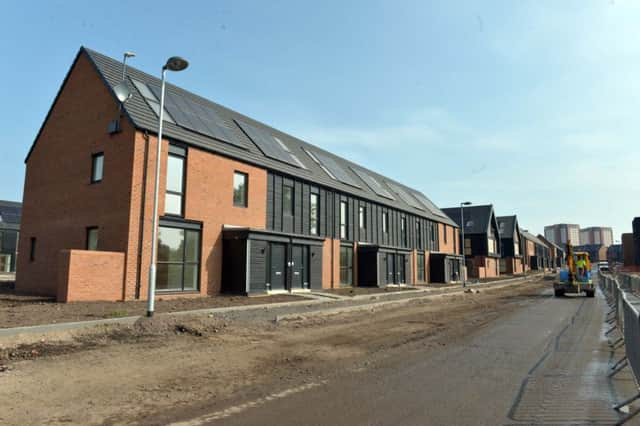Culture must be part of new homes


At a time when the Scottish Government, the house building industry, economists, homebuyers and renters are all concerned about whether we are building enough new homes in Scotland, it might seem odd to suggest that it is the issue of quality rather than quantity that needs to be addressed.
In truth, most of Scotland’s housing stock has not been designed by architects - as a nation, we have left this important process to developers, leading to a housing market which believes it has reflected the tastes and aspirations of new buyers by delivering budget homes in high volumes.
Advertisement
Hide AdAdvertisement
Hide AdWith countless uninspiring housing developments currently being dotted around the country, these are homes which can be built anywhere but belong nowhere. Housing in the Borders and Fraserburgh is no longer different, with homes which do not express the character of that area or the community which has grown with it over decades.
Currently, the rate of change in our landscape is so fast that many local authority planning departments simply cannot cope. We must stop building housing where the layout has been dictated by road engineers, which has led to a situation where the cul-de-sac format and lack of integration with surrounding neighbourhoods is becoming the norm.
I agree with those who say that by rushing to build quickly and cheaply we risk storing up unnecessary problems for the future – that is why housing design needs to be addressed, and addressed quickly.
This article is not about sustainable communities, zero carbon design, affordable housing or the favourite current movement of planners, ‘‘New Urbanism’’. It is about our culture, identity and the role of the housing design within that. Good design must involve an understanding of place at many levels, including the culture of place and regional identity in this time of globalisation.
Buildings and towns should enable us to structure, understand and remember the shapeless flow of reality and, ultimately, to recognise and remember who we are. By protecting our local environment and enhancing places, we will see the economic benefit of good design.
If the design of homes is understood to affect our streets and infrastructure and support our economy by creating attractive and inspirational places where people want to live and work, why are we continuing to build anonymous, overpriced, low quality homes on overvalued land which have become no more than an investment product?
Our rigid and nationalised planning system is delivering not only the wrong kind of housing but also a highly volatile housing market. This has significant costs and we now live in some of the oldest, smallest, pokiest and most expensive housing in the developed world.
It could also impact on Scotland’s tourism industry as visitors to the country do not come to see kit houses or so-called ‘affordable’ standard boxes; they come to see the place, its history, its natural beauty. We need to put the capital ‘‘A’’ back into the architecture of housing – rather than starting with budget, we need to start with a heart.
Advertisement
Hide AdAdvertisement
Hide AdFurthermore, over the next 20 years the number of people aged over 60 in the UK is expected to increase by 40 per cent and our post-retirement years will be longer and healthier. We need to plan for this massive demographic phenomenon which will change our cities, towns, villages and the kind of housing that we are building.
We need to bring forward sites that enable small developers, practices, and community groups to design deliver and invest in good quality housing design and be brave enough to ignore the advice of property agents in order to recalibrate the way we measure value. We think we know the cost of everything, but, as the saying goes, we know the value of nothing.
We should be asking why we can’t seem to build homes that have the same quality as period properties from previous generations. Why can’t the value of homes be measured on the quality of volume, space, light, character, detail and energy efficiency, none of which is taken into account in standard property valuations?
Architecture is a physical manifestation of culture and identity and housing is an important part of that. We need a new and emerging architecture in Scotland to regain the country’s sense of culture and to take an ethical stance towards creating homes that once more put people first through dignified and appropriate design.
• Professor Gokay Deveci , FRIAS, RIBA, is a chartered architect, and director of the Housing Practice and Research Unit (HRPU) at Robert Gordon University www.rgu.ac.uk
SEE ALSO